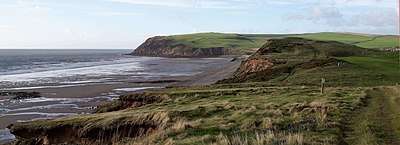England Coast Path
The England Coast Path is a proposed long-distance National Trail which will follow the coastline of England. When complete, it will be 2,795 miles (4,500 kilometres) in length.[1]
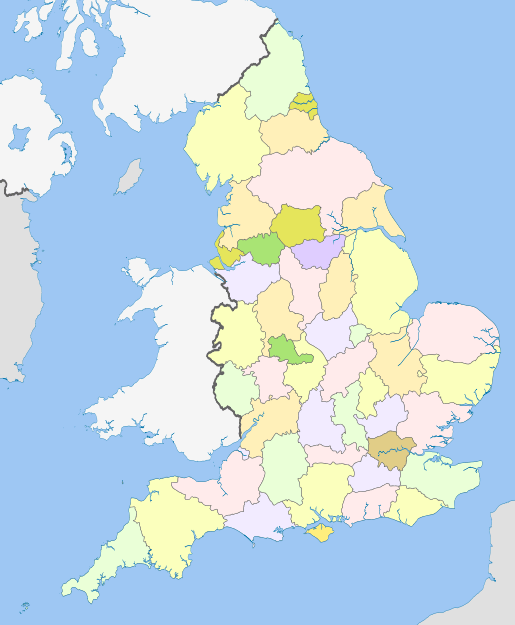
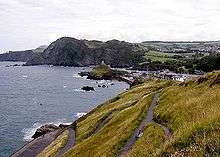
The trail is being implemented by Natural England, a non-departmental public body of the UK government responsible for ensuring that England's natural environment is protected and improved. It also has a responsibility to help people enjoy, understand and access the natural environment.[2] Although various National Trails already existed along England's coast, the first stretch of the official England Coast Path was opened at Weymouth Bay in Dorset in 2012.[3]
In December 2014 the UK Government, encouraged by the success of the Wales Coast Path, announced that more than £5 million of additional funding was being committed over the following 5 years, to complete the Path by 2020, a decade earlier than would have otherwise been possible.[4][5] In the UK public access to the foreshore, below the line marking high tide, has existed for a long time. The intertidal zone is generally deemed to be owned by the Crown although there are some exceptions. In England ownership of land extends only to the high water mark, and the Crown is deemed to own what lies below it.[6]
Because of a European court judgement in April 2018 regarding environmentally protected sites, progress has slowed, though Natural England hope to open "as much of the England Coast Path as it can by 2020".[7]
History
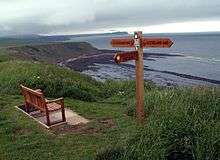
The final section of a long-distance coastal footpath running 630 miles (1,010 km) around the southwest coast of England, through Somerset, Devon, Cornwall, Devon and Dorset (walking anti-clockwise) was designated as a National Trail in 1978.[8] Sections were opened earlier: in Cornwall, 1973, South Devon and Dorset Paths, 1974, Exmoor Coast, 1975.[9]
Before this, in Wales, the Pembrokeshire Coast Path had been opened in 1970. Following the establishment of the Pembrokeshire Coast National Park in 1952, Welsh naturalist and author Ronald Lockley surveyed a route around the coast.[10] Lockley's report for the Countryside Commission in 1953 was welcomed and broadly adopted. Some sections of the walk were existing rights-of-way, but the majority were in private hands, necessitating negotiation. Most landowners were in favour, and many benefitted from the erection of new fencing. Even today, however, the path in places detours from the obvious line where landowners were unwilling to accept a new right-of-way across their land.[11]
Right to roam
in 2000 the Government legislated to introduce a limited "right to roam", without compensation for landowners. The Countryside and Rights of Way Act 2000 (CROW) was gradually implemented from 2000 onwards to give the general public the conditional right to walk in certain areas of the English and Welsh countryside, including coastal land. Developed land, gardens and certain other areas are specifically excluded from the right of access. Agricultural land is accessible if it falls within one of the categories described in the Act. People exercising the right of access have certain duties to respect other people's rights to manage the land, and to protect nature. The new rights were introduced region by region through England with completion in 2005. Maps showing accessible areas exist.
Legal background
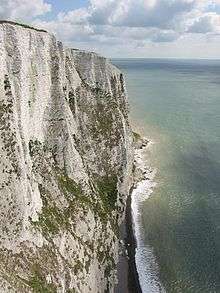
The England Coast Path has been possible because of the introduction of a UK law, the Right of Coastal Access (Part 9 of the Marine and Coastal Access Act 2009).[12][13] both along the England Coast Path and, usually, over the associated ‘coastal margin’.[14]
Natural England's Coastal Access Scheme was approved by the Secretary of State on 9 July 2013 under section 298(2) of the Marine and Coastal Access Act 2009, and presented to Parliament pursuant to section 298(6) of the Marine and Coastal Access Act 2009.[12]
The first instance of this new law was implemented on a stretch of the English coast at Weymouth Bay on 29 June 2012.[15]
This includes – where appropriate – any land, other than the trail itself, which forms part of the coastal margin and which has public rights of access along the way. This is known as ‘spreading room’. However, this does not include any right to enter private houses and gardens or Ministry of Defence land. The new right of Coastal Access also includes 'roll back', namely that if a section of coast erodes, the path will move back accordingly.[1]
Existing coastal trails
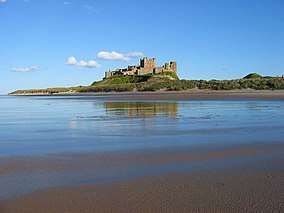
Existing coastal trails in England will be incorporated into the England Coast Path. There is, however, work to be done in upgrading and standardizing access and signage on these.[16]
The following is a list of some of the existing coastal paths. Information about other paths can be found on the Long Distance Walkers Associations web page.
- Bournemouth Coast Path: 20 miles (32 km)
- Cleveland Way: 110 miles (180 km); only part of the Cleveland Way is coastal. First proposed in the 1930s, a formal proposal was submitted in 1953.[17] The trail was officially opened in 1969. It was the second official National Trail to be opened.[18]
- Cumbria Coastal Way: 185 miles (298 km)
- Durham Coastal Footpath (18 km/11 miles) passes through or close to Seaham Harbour, Dawdon, Easington, Dene Mouth, and Blackhall.[19]
- Isle of Wight Coastal Path: 67 miles (108 km)
- Lancashire Coastal Way: 66 miles (106 km)
- Norfolk Coast Path: 45 miles (72 km). It was opened in 1986 and covers the North Norfolk Coast AONB (Area of Outstanding Natural Beauty).
- The Northumberland Coast Path runs 101 km/63 miles along the coast from Cresswell as far as Bamburgh. before heading inland to Belford and the Kyloe Hills, which offer panoramic coastal views. From here it joins St. Cuthbert's Way and returns to the coast at the causeway to Holy Island before continuing to Berwick-upon-Tweed, close to the Scottish border. It is part of the European North Sea Trail.[20]
- Saxon Shore Way: 163 miles (262 km). The Saxon Shore Way was originally opened in 1980, but has since been re-established, and in parts re-routed and extended.[21]
- Solent Way: 60 miles (97 km)
- South West Coast Path: 630 miles (1,010 km). The final section of the path was designated as a National Trail in 1978.[8]
- Suffolk Coast Path: 50 miles (80 km)
- West Somerset Coast Path: 58 miles (93 km). In March 2016 the path was extended to run from Brean Down to Minehead.[22]
Work in progress
See the official website for the current situations: Natural England. Some right of way and foreshore access may already exist.
Linked trails
- At the border with Wales it will link to the Wales Coast Path, which was fully opened on 5 May 2012, and comprises an 870-mile (1,400 km) coastal walking route from Chepstow in the south to Queensferry in the north.[23][24]
- Offa's Dyke Path, a 177-mile (285 km) non-coastal route, also links the England Coast Path at its Welsh border, largely following the line of the remnants of Offa's Dyke, fairly close to the boundary between England and Wales.
Outline of the route
Natural England has divided the coast into 66 sections for planning purposes. The sections fall into five categories:
- England Coast Path and associated access rights now open
- Approved but not yet open
- Work in progress
- Estimated start 2016–17
- Estimated start 2017–18
The sections (working anti-clockwise round England from the southern end of the Welsh border and using Natural England's areas) comprise:[5]
- Area 11: Somerset
- Aust to Brean Down
- Brean Down to Minehead
- Area 12: Devon and Cornwall
- Minehead to Combe Martin
- South West Coast Path
- St Anthony to Cremyll
- Kingswear to Lyme Regis
- Area 13: Dorset, Hampshire and Isle of Wight
- Lyme Regis to Rufus Castle
- Rufus Castle to Lulworth Cove
- Lulworth Cove to Christchurch
- Christchurch to Calshot
- Calshot to Gosport
- Isle of Wight
- Gosport to South Hayling Island
- Area 14: Sussex and Kent
- South Hayling Island to East Head
- East Head to Shoreham
- Shoreham to Eastbourne
- Eastbourne to Camber
- Camber to Folkestone
- Folkestone to Ramsgate
- Ramsgate to Whitstable
- Isle of Sheppey
- Whitstable to Iwade
- Iwade to Grain
- Grain to Gravesend
- Area 8: Essex
- Gravesend to Southend-on-Sea
- Southend to Wallasea Island
- Foulness, Potton and Wallasea Island
- Wallasea Island to Burnham-on-Crouch
- Burnham-on-Crouch to Maldon
- Maldon to Salcott
- Mersea Island
- Salcott to Jaywick
- Jaywick to Harwich
- Area 9: Suffolk and Norfolk
- Harwich to Shotley Gate
- Shotley Gate to Felixstowe
- Felixstowe Ferry to Bawdsey
- Bawdsey to Aldeburgh
- Aldeburgh to Hopton-on-Sea
- Hopton-on-Sea to Sea Palling
- Sea Palling to Weybourne
- Weybourne to Hunstanton
- Hunstanton to Sutton Bridge
- Area 5: Lincolnshire
- Sutton Bridge to Skegness
- Skegness to Donna Nook
- Area 3 (Yorkshire)
- Donna Nook to Humber Bridge
- Humber Bridge to Kilnsea
- Kilnsea to Filey Brigg
- Filey Brigg to Newport Bridge
- Area 1: Durham, Tyne & Wear and Northumberland
- Newport Bridge to North Gare
- North Gare to South Bents
- South Bents to Amble
- Amble to Bamburgh
- Lindisfarne
- Bamburgh to Scottish border
- Area 2 (Cumbria)
- Gretna to Allonby
- Allonby to Whitehaven
- Whitehaven to Silecroft
- Silecroft to Silverdale
- Area 4: Lancashire and Merseyside
- Walney Island
- Silverdale to Cleveleys
- Cleveleys to Pier Head, Liverpool
- Birkenhead to Welsh Border
See also
- The E9 European long-distance path or European Coastal Path (French: Sentier Européen du Littoral) is one of the European long-distance paths, running for 5,000 kilometres (3,100 mi) from Cabo de São Vicente in Portugal to Narva-Jõesuu in Estonia. The UK section runs from Dover to Plymouth (both ferry ports).
- Long-distance footpaths in the United Kingdom
- Scottish Coastal Way
References
- "English Coast Path". nationaltrail.co.uk. Retrieved 4 December 2015.
- "Natural England". gov.uk. Retrieved 4 December 2015.
- Andrew McCloy, "The England Coast Path: The challenge of plotting a path by the sea" 6 May 2018 Cicerone
- "England Coast Path in sight!". Ramblers. 3 September 2014. Retrieved 4 December 2015.
- "Coastal Access Completion by 2020 – Provisional Timings and Stretches" (PDF). Natural England. 1 December 2015. Retrieved 4 December 2015.
- "S.O.U.L." Retrieved 13 November 2016.
- "England Coast Path: improving public access to the coast". Natural England. 26 March 2020. Retrieved 15 May 2020.
- Countryside Agency (25 September 2003). "Coast Path is a £300M Money Spinner for the South West". Countryside Agency. Archived from the original on 5 December 2008. Retrieved 1 February 2008.
- "Our History", Southwest Coastal Path Association]
- Kelsall, Dennis; Kelsall, Jan (2005). The Pembrokeshire Coastal Path: From Amroth to St Dogmaels: A Practical Guide for Walkers (2nd ed.). Cicerone Press. ISBN 978-1852843786.
- John, Brian (2012). Pembrokeshire Coast Path. Aurum Press. ISBN 978-1845137823.
- Coastal Access - Natural England's Approved Scheme, 2013, retrieved 20 January 2017
- England Coast Path: improving public access to the coast, www.gov.uk, retrieved 16 August 2016
- Manage your land on the England Coast Path, www.gov.uk, retrieved 16 August 2016
- Weymouth Bay (PDF), retrieved 16 August 2016
- "Improving access to the coast", Natural England.
- Cowley, Bill (1969). The Cleveland Way. Dalesman Publishing.
- About this Trail - Cleveland Way - National Trails
- "Durham Coast Path", Long Distance Walkers Association
- "Northumberland Coast Path", Long Distance Walkers Association
- "The Saxon Shore Way". Walking Pages - Trails and Paths. p. 1. Archived from the original on 16 February 2008. Retrieved 3 April 2009.
- "England Coast Path new stretch opens in Somerset". BBC. Retrieved 15 March 2016.
- "All-Wales coast path nears completion". BBC News Wales. Retrieved 16 August 2016.
- "Wales Coast Path at a glance". The Independent. Retrieved 16 August 2016.
External links
- England Coast Path: improving public access to the coast Natural England. Retrieved 20 January 2017
- England Coast Path National Trails. Retrieved 20 January 2017
